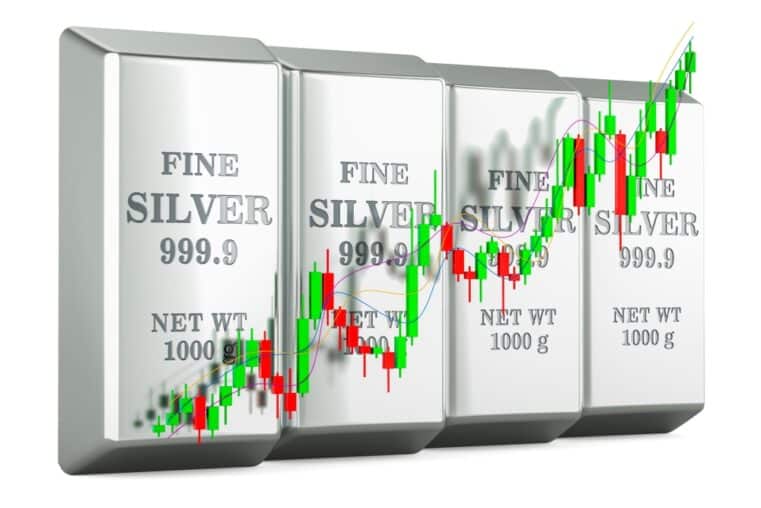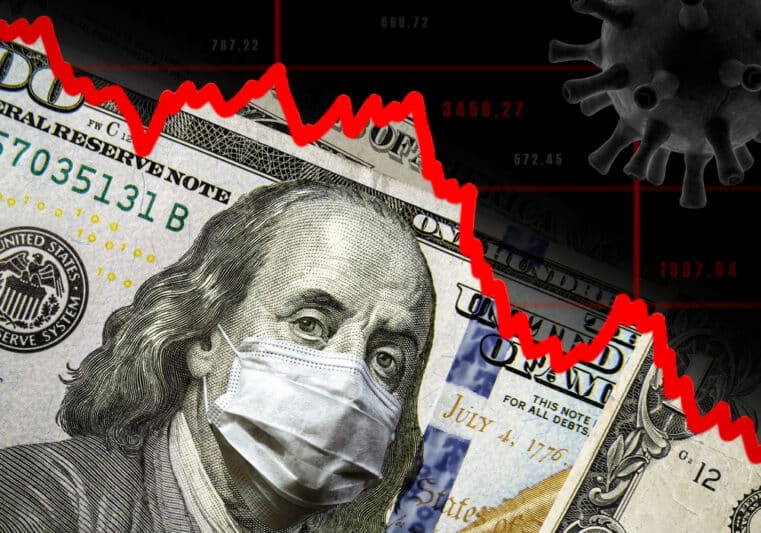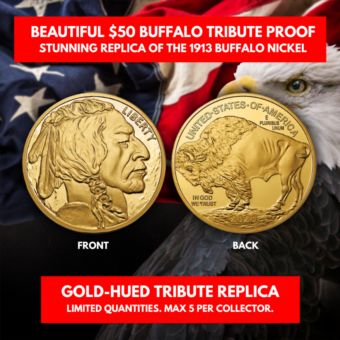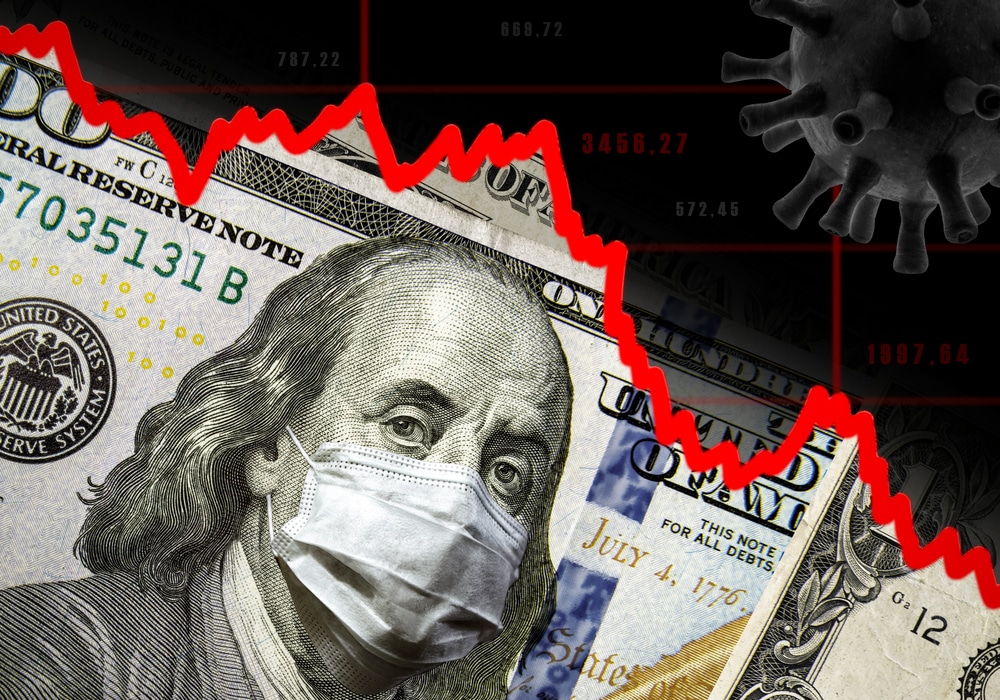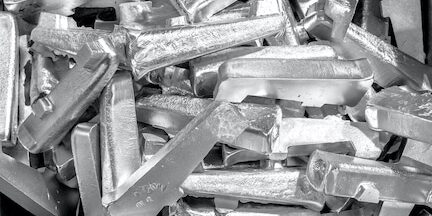
What Is Platinum and What Is Platinum Used For?
Based on how little has been mined throughout history, platinum is the rarest physical precious metal. Here we cover platinum uses including how it is used by humans begins, and in what percentage of annual platinum production is used by which platinum demand sectors.
Currently platinum is cheaper versus gold than it has ever been for over 110 years. Yet platinum supplies above ground are dwarfed by physical gold qualities. Come see why we still value platinum and believe it to be perhaps the best long term precious metal today.
Due to platinum’s high boiling point (3,215 F/1.768 C), this rare white-colored precious metal is something of a relative newcomer to financial markets (compared to silver or gold). For a very long time, platinum was actually discarded because it was too hard to work with due to its atomic weight.
Not all that long ago, 17th Century Spanish conquistadors could not even achieve fires burning hot enough to melt platinum from their gold and silver mined ores, much less isolate and identify platinum’s true rarity as white metal and inherent value propositions now known and used today. In fact, platinum derives its name from the Spanish term “platina”, which means “little silver”.
Platinum is dense, hard, and white, like white gold, and is actually mostly a byproduct of nickel and copper mining in South Africa (about 70% of new line platinum supplies come from there) and Russia as well as the United States, Canada, and South America. The platinum group of metals includes platinum, palladium, osmium, rhodium, and ruthenium.
Today, platinum is an invaluable metal on the periodic table and is used for any number of different purposes.
Here we will cover what is platinum used for in everyday life now.
Platinum Uses Today
Platinum uses come from 5 major sectors:
- Platinum Automotive Catalytic Converter Exhaust Pollution Prevention (heavy in diesel)
- Platinum jewelry
- Platinum Petrochemical Uses
- Platinum Investment Demand (platinum bullion bars, coins, ETFs)
- Platinum Industrial Applications
Widely diverse applications also exist for platinum uses with over 25 industrial platinum uses such as:
- Platinum dental applications
- Platinum medical equipment
- Platinum in electronics and wiring (e.g. cell phones)
- Platinum chemical catalysts
- Platinum uses to create nitric acid fertilizers
- Platinum nitric acid explosives (partly why the USA deems it a militarily strategically critical element)
- Platinum turbine engine parts
The uses of platinum group metals are in fact so critical to US National Security and United States economic well being, that platinum is explicitly cited as being deemed 1 of 35 critical resources by the US Department of the Interior.
Platinum Uses in Car Catalytic Converters
Platinum alloy coated auto-catalysts will continue to deter a large portion of the harmful emissions that a vehicle makes at a high melting point. Now over 95% of all new automobiles come with catalytic converters.
As the number of automobiles on the road worldwide increases continuously, air-pollution has become an environmental problem of public concern. Platinum along with palladium applications have been paramount in quelling greenhouse gas emissions.
A modern automobile’s catalytic converter helps convert over 90% of harmful electrons like carbon monoxide, hydrocarbons, and nitrogen oxides from gasoline engines into less harmful carbon dioxide, nitrogen, and water vapor.
When platinum is fitted in diesel automobile engines, a catalytic converter converts over 90% of hydrocarbons, carbon monoxide, and cancer-causing particulate matter into carbon dioxide and water vapor.
Records show that over 93 tons or near 3 million troy ounces of physical platinum use went to make car catalytic converters in 2017 (about 43% of the platinum mined in the year).
Platinum Use in Jewelry
Being both a highly ductile and malleable precious metal with a silvery sheen. Platinum is also the least reactive precious metal and is known for its resistance to corrosion and tarnishing to open air. Moreover, platinum does not oxidize at any temperature.
Platinum is described as a ‘noble metal’ for it resists chemical action, does not corrode, and is not easily attacked by acids, and does not tarnish. Even the thinnest sections of platinum are strong and sturdy. Fine .999 platinum is slightly harder than pure .999 iron and does not wear out or warp easily and is not prone to oxidation.
Hence uses for platinum jewelry typically retains its shape, and thus, provides perhaps the best and safest setting for diamonds. We have platinum use in diamond earrings, finger rings, pendants, bracelets, and more. All are quite popular, especially in the eastern world. About 35% of the platinum mined in 2017 was demanded by uses of platinum jewelry applications.
Platinum Use in Petrochemicals
Platinum in a powdered form is often used as a catalyst in chemical reactions. It is platinum electrodes at high temperatures that are often used for various processes in electrochemistry.
They are often coated with a layer of platinum black (Pt black or powdered platinum). This platinized platinum gives better results than pure .999 platinum does in applicable platinum-based chemical reactions. It can be dissolved by hydrochloric acid or aqua regia.
Platinum Use in Investment Demand
Platinum investing is a relatively new phenomenon given the platinum price discovery only recently began on the NYMEX in the 1970s.
Both platinum coins and platinum bars are actually rarer in the world than gold, and certainly silver. Yet platinum bullion coins, platinum bullion bars, and platinum ingots (old English reference to platinum bars) are traded or collected all over the world.
Of course, in relatively small lots to other precious metal bullion products made with gold or silver as competing examples.
Uses Of Platinum in Various Industrial Applications
It is estimated that about 1/5th of every manufactured product we use today, either contains platinum or requires platinum in some portion of its manufacturing.
Like gold, copper, silver, and other metals, platinum also has an acutely limited supply which may be exhausted within a few decades. Based on the escalating demand for platinum and other critical commodities at these current price points. Often mixed with cobalt, platinum is used to get strong permanent magnets.
Electrodes inside of glass are usually sealed with platinum because its thermal coefficient of expansion is almost equal to that of glass.
Platinum can be used in low voltage electrical contacts and electrical resistance wires.
Presently platinum is also used in resistance temperature detectors (RTDs), which are widely used to measure industrial temperatures.
More Uses Of Platinum in Various Industrial Applications
Turbine engines for airplanes often use platinum applications. Black platinum is often used in self-lighting gas lamps, ovens, and stove burners.
Platinum catalysts help manufacture nitric acid, the raw material for fertilizers and military explosives (thus partly why the US Department of the Interior deems platinum a National Security critical element).
The manufacturing of specialty silicones may require platinum for highly durable, waterproof, and electrically insulating materials. For instance, there is platinum used to create the removable coating for a paper of sticky labels or the release paper upon which many pre-baked goods are placed.
Manufacturing silicones for water repellent coatings, high consistency rubbers, and liquid silicone rubbers, often require platinum catalysts. These silicone applications can be found in cleaning products, airplane and automotive engine seals and gaskets, medical devices, high voltage cable covers, construction sealants, furniture polishes, as well as in lipsticks, and even shampoos.
Platinum compounds like ‘cisplatin’, get used in chemotherapy medication to treat certain types of cancer with anticancer drugs. Platinum is often also present in various laboratory equipment, dental prostheses, various medical and surgical equipment as well.
In the manufacturing processes of silicone rubber and gel components, platinum agents help produce several types of medical implants (e.g. breast implants, joint replacement prosthetics, artificial lumbar discs, and vascular access ports).
The FDA has approved the use of platinum for it hasn’t found any evidence suggesting toxicity.
Platinum-osmium alloys are used in implants such as pacemakers and replacement valves.
Computer hard disks often contain platinum in the magnetic layers. Hard disk drives are often now present in TVs, video game consoles, and other home entertainment systems. The use of platinum has helped reduce the disk size. Platinum applications have also led to improved data-storing capacity. Platinum is present in the optical fibers and liquid crystal display glass, especially in laptops.
There are also trace amounts of platinum used in cell phone circuits. Platinum used in the fuel cells could also help to replace legacy battery applications to come.
Proton exchange membrane (PEM) fuel cells contain platinum catalysts and are now commonly used to power automobiles. Platinum fuel cells are also used to generate backup power for buildings.
Fuel cells that use platinum generate power quickly and silently with the help of oxygen and hydrogen while emitting only pure water (H20) as a by-product. Thus platinum fuel cells both deter air and noise pollution.
While platinum-based fuel cells have been commercialized, they are dwarfed in current market share to new technologies like hybrids and electric vehicles (EVs) that have hit the markets in recent years. And platinum-based fuel cells are of course not remotely close in competition to either diesel or gasoline automotive engines still today.
Pure platinum is also used in car spark plugs and in automotive airbag coatings. Platinum produced silicone can protect nylon airbags from an explosion as well these platinum-cured systems are long-lasting and stable, able to be folded up for years without erosion.
Although this was but a cursory dive into modern real-world uses for platinum and platinum-based manufacturing applications. As you can now see, platinum is a widely used and multivariate rare resource.
Platinum used for investments, adornment, pollution control, and within real-world goods critical to our modern ways of life will likely only escalate in the decades to come. Ironic given how little physical platinum is available on Earth. Indeed, platinum is one of the world’s most precious metals amongst a mere few others.
How Much Platinum is in the World?
There has been a long-running claim that the total amount of physical platinum the world has ever mined would fit in an average living room or garage. We’ll test this claim here, but also. Here we examine various long-range platinum mining data sources to best estimate how much non-exhausted platinum indeed remains in the world.
Other than merely knowing the rough amount of platinum ever mined, most of which has got put to commercial use. For bullion buying readers, we will try to estimate how much .999 fine platinum is available above ground today.
Using CPM Group’s 1977 to 2017 platinum supply data. We find just under 190 oz of platinum or nearly 6,000 tonnes of platinum have gotten supposedly pulled from the Earth’s crust over this 4-decade timespan.
This claim gets corroborated by the US Geological Survey whereby a slight majority of all the platinum group metal mining supplies from 1900 to 2011 where palladium, with a small minority of platinum (i.e., theirs is a 14,200 metric tonne claim through 2011, again about 40% of that being platinum).
Data crunchers and precious metals infographic makers, Visual Capitalist, published in 2013 that a total of 9,400 tonnes of platinum had been mined up to date. Since then we will round number this figure to 10,000 metric tonnes or just over 321 ounces for those keeping track. They even give us a visual of the aforementioned all-time platinum mined cube claim which back in 2013 was about 7.2 meters long, comprehensive, and tall. Today that would be about 7.7 meters on all sides.
So an average 2-car garage in the USA with perhaps a high almost second level with extra storage space might top out at 7 meters, by 7 meters. This suburbia example is stretching it, of course, most average US garages aren’t this large. Surely, all the platinum supply fitting into a garage or living room claims must apply to current above-ground .999 platinum bullion supplies? Remember only a small portion of all-time mined platinum has gotten used in fabrication demand to date.
For now, let us dig further into the hard data details on platinum supplies over time. In doing so, we’ll be able to better ascertain a conservative estimate for total physical platinum supplies in the world today - a complete world platinum estimate ground in fact.
These estimations most likely combine the highest demand sectors of platinum applications (e.g, anti-auto pollution catalytic converters) and platinum jewelry into the fray. By late 2015, we clocked physical platinum supplies at 26.9 million ounces using Pt mining import-export data over the long term.
Trouble is again, a vast majority of this estimate likely commingles platinum jewelry demand and other platinum application amounts into this total platinum supply figure ending in 2015. Japan and China are the respective platinum jewelry gorillas of the world. Likely much of this 40-year running platinum jewelry supply has been recycled back into platinum demand uses. Japanese demand peaked around the middle 1990s, while China has surpassed old Japanese Pt jewelry demand of late.
How Much Platinum Bullion is in the World?
In 2014, Reuters reported a wide range of possible .999 fine platinum supply levels ranging from as small as only 4 million troy ounces to as high as 20 million troy ounces.
Let us examine a few of the most easily identifiable .999 fine platinum supply stocks to confirm some percentage of these claims. We start with Platinum ETF bullion holdings at the moment. There are 2.709 million ounces there. We can next look at how many .999 platinum coins have been struck and sold over many decades, and will conservatively assume not one ounce has been recycled to date (highly unlikely). There have been approximately 3.7 million oz of platinum coins minted and struck since 1983.
Then there is also a tiny, almost minuscule pile of about 170,000 oz of platinum bullion, sitting in ironically the most critical determinant of platinum spot prices day to day via the NYMEX platinum price discovery mechanism. Additionally, another 43,000 oz or so of platinum sits in Japanese TOCOM platinum warehouses.
Shanghai Gold Corporation also trades platinum contracts, but data on their physical stockpile is minuscule compared to platinum ETF stockpiles at the moment. All total, we are conservatively estimating there are about 8 million ounces of .999 fine platinum above ground. We are talking about a huge swath of platinum bullion, not available at prices today. Much of which was likely ‘discovered’ and refined into bullion at much higher than the current $930 USD oz price it ranges around today.
Estimated: about 8 million ounces of .999 fine platinum bullion.
This estimated 8 million ounces of .999 fine platinum bullion above ground supply is valued at approximately USD 7.44 billion in current value based on a current fiat Fed not a $930 oz platinum spot price. And sure, $6.4 billion in US dollars may sound like a lot of money to an individual not a part of the published global billionaire order.
But this estimate is minimal when considering the amount of multi-hundred trillions of USD values when sloshing around the globe at the moment. Considering the total global debt pile alone is near a mind-numbing $250 trillion mark, a large chunk of which is earning negative interest rates.
So in fact, this $6.4 billion .999 fine platinum supply estimation is so small, all but one of the world’s largest multi-billionaires could make a play at cornering the .999 platinum market. Again we base that claim on the platinum’s paltry price and tiny bullion supply points respectively at the moment. Platinum has perhaps not been this cheap to gold in over a century.





